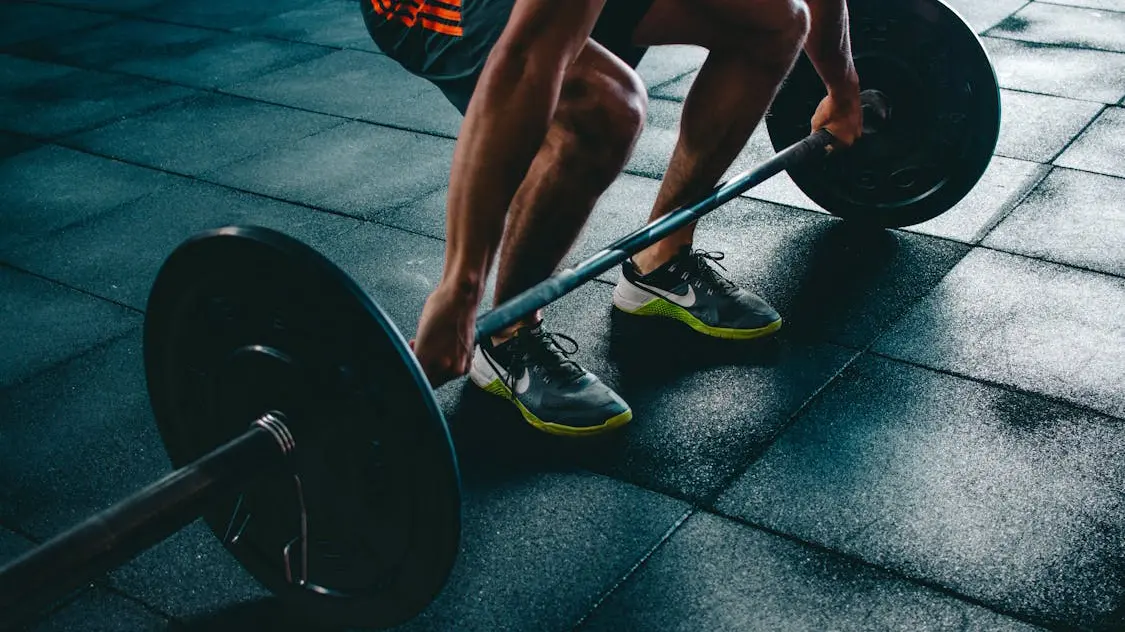
The barbell is a cornerstone of many fitness routines, and for good reason. It allows you to lift heavier weights than dumbbells, making it ideal for building muscle strength and power. But to reap the benefits and avoid injury, proper technique is crucial. Here’s how to get the most out of your barbell training:
Safety First
Form Over Weight: It’s tempting to go heavy, but prioritize proper form first. Lighter weights with good technique will yield better results and minimize injury risk.
Warm-up: Prepare your body with light cardio and dynamic stretches to increase blood flow and improve flexibility. Pay particular attention to the muscle groups you’ll be targeting during your workout.
Know Your Limits: Don’t push yourself beyond your capabilities. If a weight feels unstable or your form breaks down, reduce the weight. Ego has no place in the weight room; listen to your body’s signals.
Spotter Safety: When attempting heavy lifts, especially squats and deadlifts, enlist a spotter to help guide the weight and ensure your safety. A good spotter will be familiar with proper form for the exercise and be positioned to assist you if needed.
Mastering the Basic Lifts:
These compound exercises work multiple muscle groups simultaneously, building overall strength and athleticism:
Squat: The “king” of exercises, squats target your quads, glutes, hamstrings, and core. Focus on keeping your back straight, core engaged, and driving through your heels as you stand up. Proper squat form will help you avoid lower back pain and maximize strength gains.
Deadlift: This hinge movement strengthens your posterior chain (backside) muscles. Maintain a flat back, hips low, and core braced as you lift the weight. The deadlift is a fantastic exercise for building overall strength and functional movement, but it’s crucial to maintain proper form to avoid injury.
Bench Press: This builds chest, shoulder, and triceps strength. Lie flat on a bench with the bar positioned just above your chest. Lower the bar with control and press back up explosively. There are variations of the bench press, such as the incline press and decline press, that can target different portions of your chest muscles.
Overhead Press: This targets your shoulders and core. Stand with the bar racked at shoulder height, press the weight directly overhead, keeping your core tight and elbows locked at the top. The overhead press can help improve posture and stability in addition to building shoulder strength.
Building a Routine
Choose a Program: There are many barbell programs available online or from a certified trainer. These will outline exercises, sets, reps, and rest periods. When choosing a program, consider your experience level, goals (building muscle, increasing strength, or improving powerlifting), and the amount of time you can dedicate to training each week.
Start Simple: Begin with a beginner-friendly program that focuses on form and gradually increases weight and intensity over time. This will help you build a solid foundation and minimize the risk of injury.
Focus on Progressive Overload: As you get stronger, increase the weight, sets, or reps to keep challenging your muscles. This principle, called progressive overload, is essential for continued muscle growth and strength gains. There are different periodization techniques you can use to structure your program and incorporate progressive overload, such as linear periodization or wave periodization.
Listen to Your Body: Take rest days when needed to allow your muscles to recover and prevent overtraining. Overtraining can lead to plateaus, injuries, and burnout. Aim for a balance between pushing yourself and giving your body adequate time to repair and rebuild.
Additional Tips
Maintain Proper Posture: Keep your core engaged throughout exercises to protect your back and spine. A strong core is essential for stability during lifts and helps transfer power throughout your body.
Control the Weight: Don’t let the weight jerk you around. Move with controlled motions on both the lifting and lowering phases of each rep. This will help you maintain proper form and maximize muscle engagement.
Breathe Properly: Exhale as you exert force (lifting the weight) and inhale as you lower it. Proper breathing helps stabilize your core and improves overall performance.
Record Yourself: Filming yourself performing exercises can help identify any form flaws. Once you’ve identified an issue, you can work on correcting it to improve your technique.
By following these tips and prioritizing proper technique, you’ll be well on your way to unlocking the full potential of barbell training. Remember, consistency is key. Stick with your program, challenge yourself progressively, and you’ll see significant improvements in strength and physique.